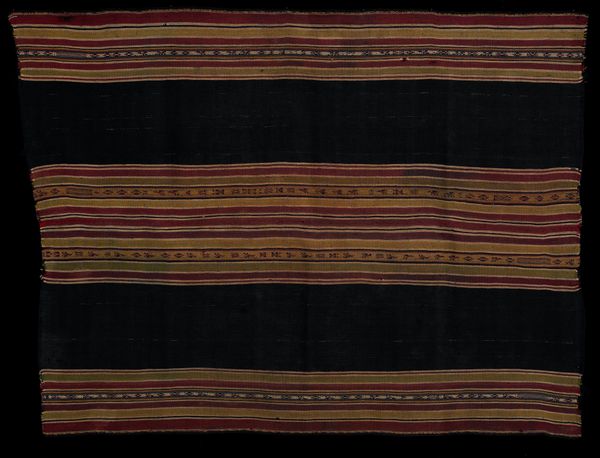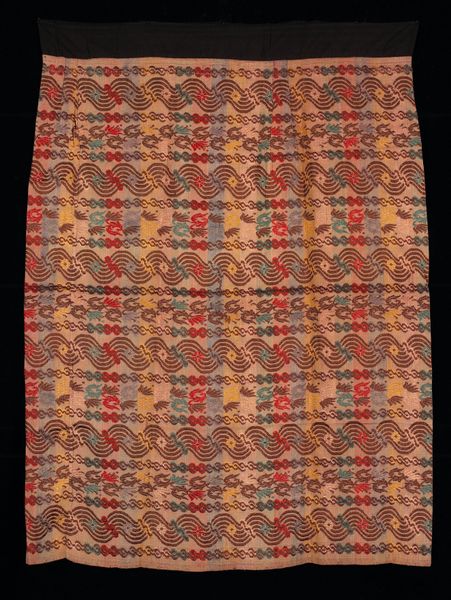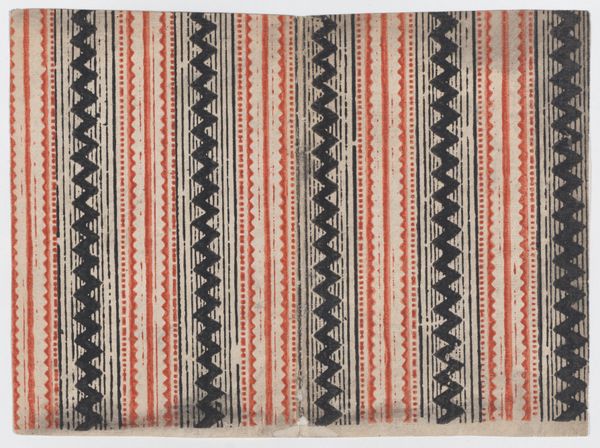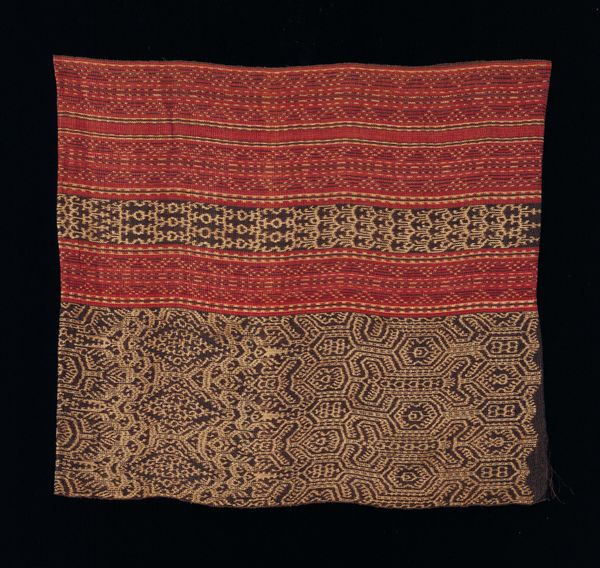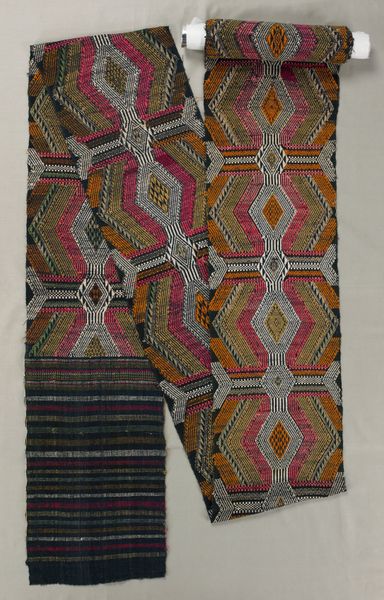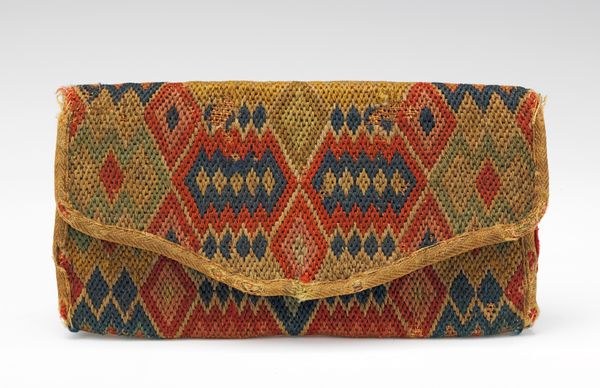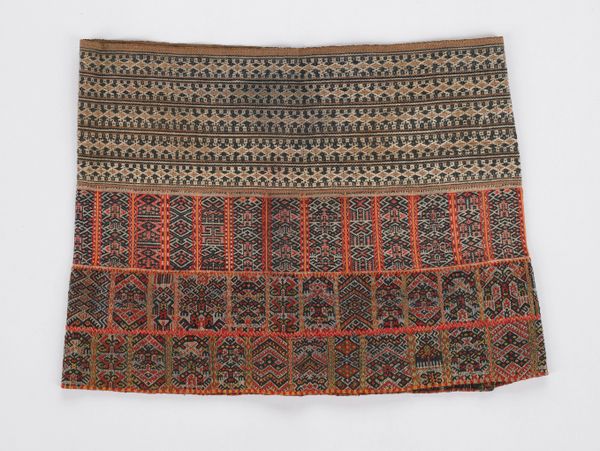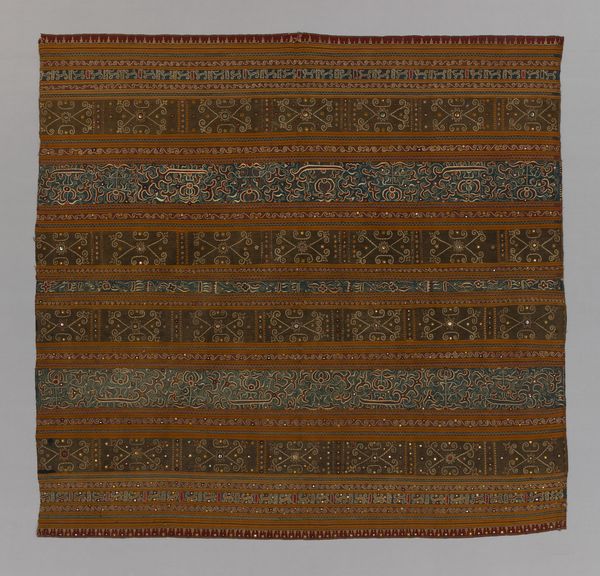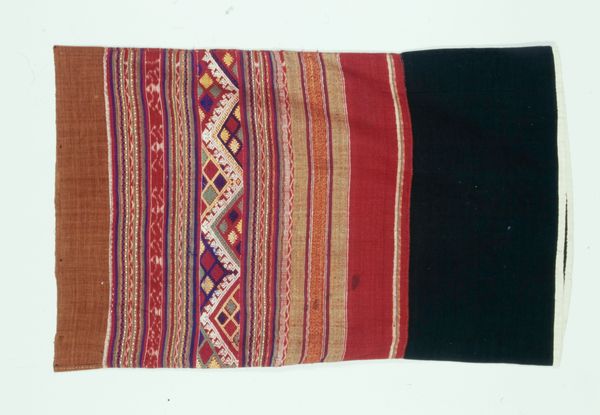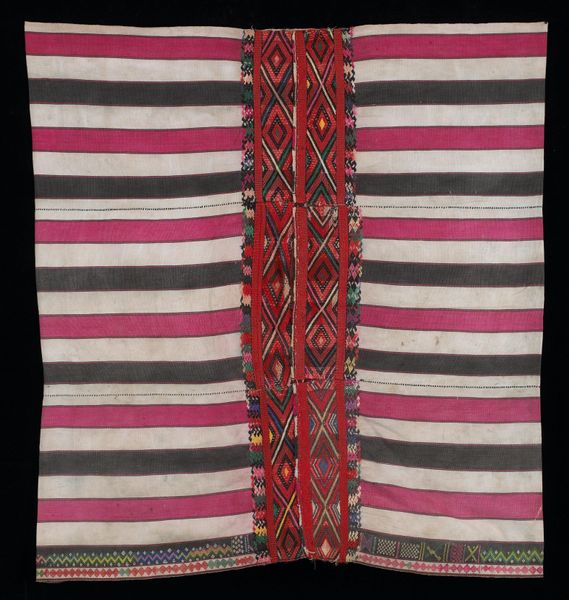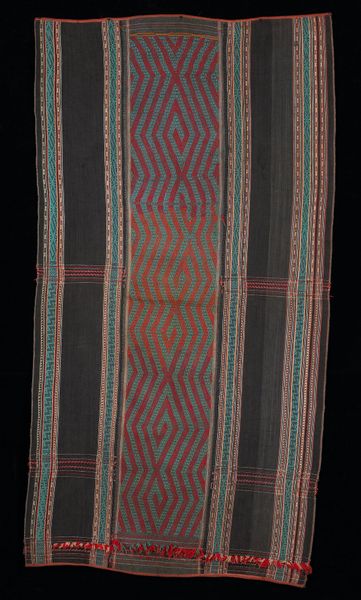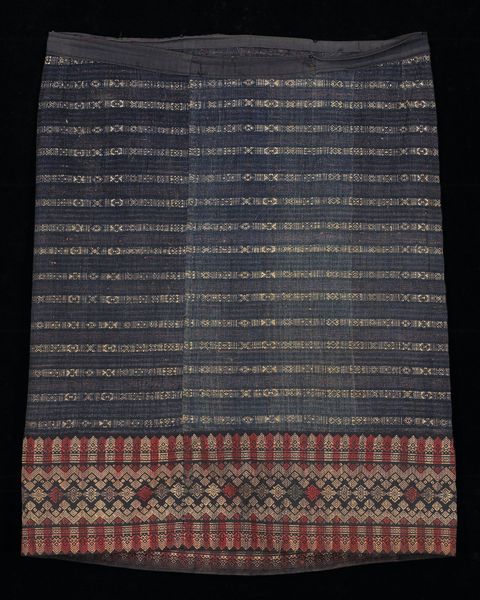
textile, cotton
#
natural stone pattern
#
textile
#
fashion and textile design
#
hand-embroidered
#
pattern design
#
fabric design
#
repetition of pattern
#
pattern repetition
#
cotton
#
textile design
#
imprinted textile
#
layered pattern
Dimensions: 93 1/2 x 59 1/2 in. (237.49 x 151.13 cm) (including fringe)
Copyright: Public Domain
Curator: Let's discuss this striking textile work titled "Cloth," attributed to the Nupe people, dating back to the mid-20th century. It’s a fascinating example of cotton cloth adorned with complex pattern design. Editor: Well, the first thing that jumps out is the almost musical quality to the piece. It feels like looking at a visual score. A blend of formal order, that layered, rhythmic grid, alongside more freeform bursts of color, like improvised solos! Curator: I see your point. The underlying grid is crucial. Considering the Nupe people's emphasis on craftsmanship and trade, such textiles were significant items of both social and economic value. The repetitive patterns point towards industrialized methods even with cotton—or maybe just deeply structured organization of labor. Editor: That's it, isn't it? Organized labor, visible in the meticulous layering, the tiny variations, little shifts in color – all suggesting the human touch working *within* a system. To think, hands were working these details! Amazing. And there is a controlled chaos here as if trying to escape from being fully repetitive. Curator: Precisely! And cotton, although being relatively easily produced still takes skill in handling it, especially considering the dyeing processes and weaving techniques, which all reflect a level of material understanding we often overlook. Editor: Looking at the details closer...are those areas showing the thread itself almost, not covering as fully as other regions of design. This isn't mass-produced perfection but there’s such personality in those minute imperfections. A sort of woven rebellion? Curator: A charming suggestion. Thinking beyond surface aesthetics also opens avenues of considering it as raw material which also highlights colonial trade relationships with Africa as its market. The history woven into each thread could easily reflect these struggles as the cotton threads were spun. Editor: Ultimately though, its enduring vitality, even viewed behind glass in Mia today. What does it mean when labor makes it "art", beyond just a means of living. Does our gaze in the museum today give a textile greater authority that was first, only functional and ornamental? Curator: Yes, such questioning of value through the act of looking itself is imperative when understanding pieces like this, whose histories are embedded as threads in its fabric literally and figuratively. Editor: Precisely. I walk away feeling both more inquisitive and enriched; the textile feels very alive and speaking still, centuries later.
Comments
No comments
Be the first to comment and join the conversation on the ultimate creative platform.

